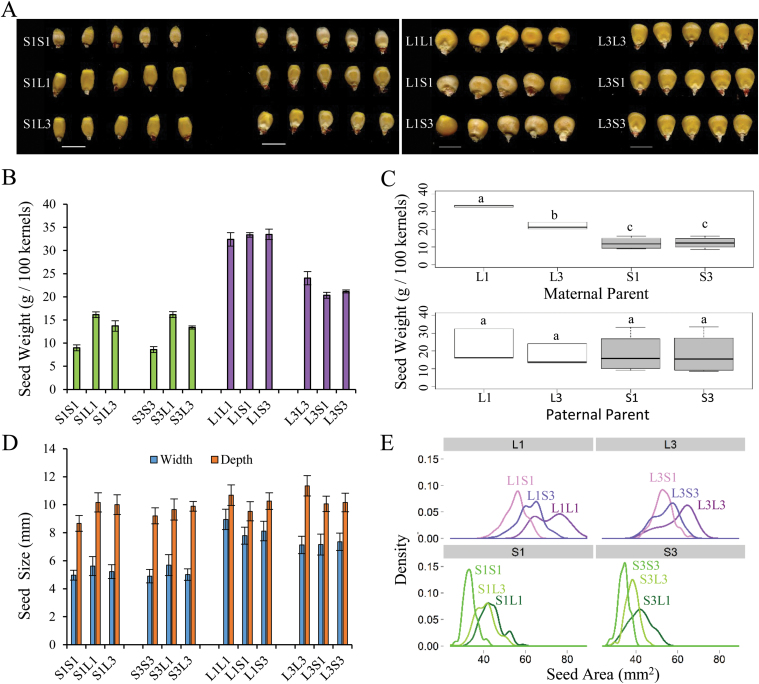Fig. 1.
Analysis of seed weight and seed size in KLS30- and KSS30-derived inbred lines and their reciprocal F1 hybrids. (A) Mature seeds of inbreds and F1 reciprocal hybrids. S1S1, S3S3, L1L1, and L3L3 are inbred lines derived from KSS30 and KLS30, respectively. F1 reciprocal hybrids (e.g. S1L1) are designated with the maternal parent on the left and the paternal parent on the right. Scale bar=10mm. (B) Seed weight per 100 seeds (mean ±SD, n=3). (C) Parental effects on seed weights. Seeds were divided into four groups based on the common maternal parent (upper panel) and paternal parent (lower panel). The letters indicate significantly different statistical groups according to ANOVA (Tukey tests, P<0.05). (D) Average seed width and seed depth quantified by image analysis from 100 seeds (error bars=SD of 100 seeds). (E) Density plot of the distribution of seed area between maternal groups. Measurements were from image analysis of 100 seeds. L1, L3, S1, and S3 refer to the maternal parents shared in the group.

